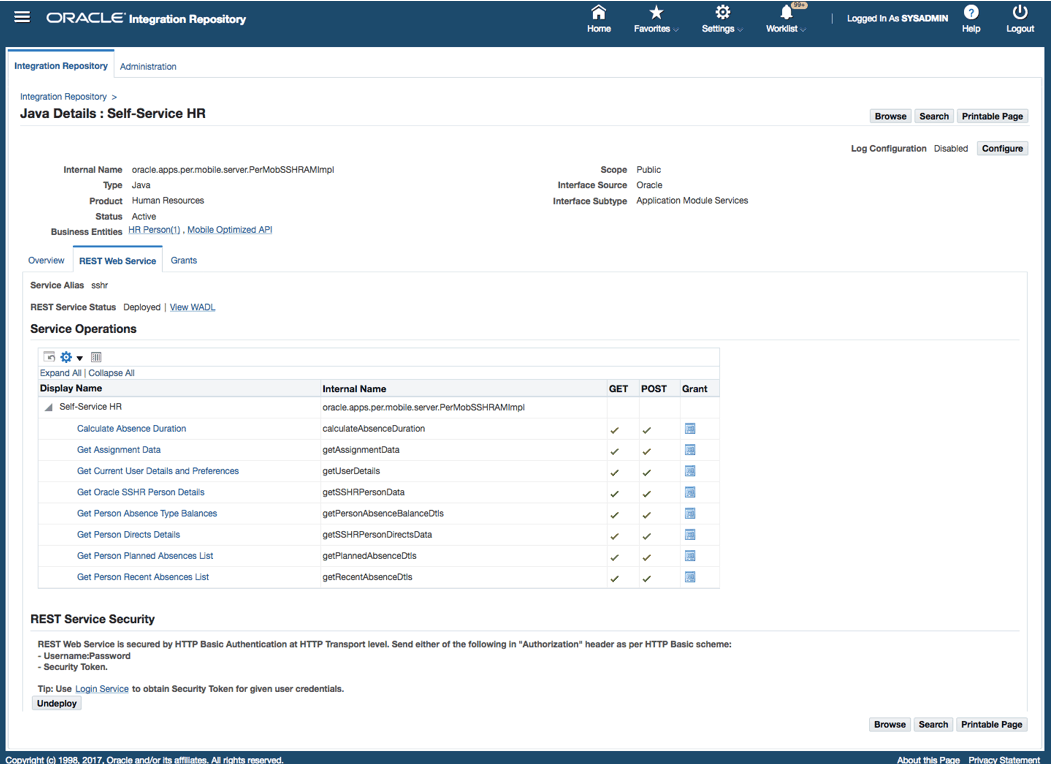Use a Java REST Service of Application Module Service Subtype as an Invoke (Target) Connection
Sample Business Scenario
An Application Module Service, a subtype of Java interface, called "Self-Service HR” is used to explain how to obtain available absence details from Oracle E-Business Suite through the invocation of a Java REST service.
In this example, the REST Adapter is used as a trigger (source) connection and the Oracle E-Business Suite Adapter is used as an invoke (target) connections to invoke the “Get Person Absence Type Balances” (getPersonAbsenceBalanceDtls) REST service operation contained in the “Self-Service HR” Java API.
At runtime when the integration is triggered, the Oracle E-Business Suite Adapter receives a request with input payload from the trigger (source) connection, invokes the getPersonAbsenceBalanceDtls REST service operation to obtain data. Once the integration is executed and completed successfully, the available person absence data is retrieved and returned as part of the JSON response message.
Prerequisites:
Before creating the integration in Oracle Integration, you need to ensure the following tasks are in place:
-
The "Self-Service HR” is deployed as a REST service with alias
sshr. All included service operations are selected and deployed as REST service operations.
Description of the illustration javarest.gifRecord the following REST service endpoint from the WADL:
https://<host>:<port>/webservices/rest/<alias>/getPersonAbsenceBalanceDtls/Replace
<alias>withsshrin this example. You will use this service endpoint later when you create a REST connection in Oracle Integration. -
Security grants are created for the
bpalmeruser.
Based on the integration scenario, the sample tasks for using an Oracle E-Business Suite Java REST service of Appication Module Service subtype in an integration are included in the Topics section:
Topics: